In the very first Naked Scientists News Flash, we find out how unmanned spy-planes can speed up medical diagnoses in rural countries, how Internet anti-spam technology is helping to interpret ancient manuscripts, and the first water bears in orbit - how tardigrades survived a trip into space, without a suit! Plus, we hear how the human heart can be pre-conditioned to cope better with a heart attack, and the plans for a giant Solar Power Tower in Nambia.
In this episode

Robotic Carrier Pigeons
As rural areas especially in developing countries are very spread out and often have an awful transport infrastructure clinics can be many hours if not days away from the nearest hospital with a lab able to do tests. This means that any treatment that depends on the results could be delayed by days, which is obviously not good for the patient.
 Barry Mendelow of the South African National Health Laboratory Service has a solution to this problem - spy planes... Not the big ones costing millions of pounds, but the small Uncrewed Aerial Vehicles (UAVs) that have been developed for soldiers to be able to see over the next hill. These are like radio controlled planes with a computer and GPS system so that they are essentially autonomous and able to fly a preprogrammed course of over 50km at 45km/hr and report back on their progress by mobile phone.
Barry Mendelow of the South African National Health Laboratory Service has a solution to this problem - spy planes... Not the big ones costing millions of pounds, but the small Uncrewed Aerial Vehicles (UAVs) that have been developed for soldiers to be able to see over the next hill. These are like radio controlled planes with a computer and GPS system so that they are essentially autonomous and able to fly a preprogrammed course of over 50km at 45km/hr and report back on their progress by mobile phone.
The first UAV they developed had a payload of 500g and is able to carry up to 20 blood or saliva samples or 2 units of blood or even life saving drugs such as rabies vaccines. It can be given coordinates to drop off the samples and then instructed to fly back to base. It is then landed manually by remote control.
While they developed this UAV, technology for doing tests has moved on and molecular diagnostics techniques have been developed that only need a spot of blood or sputum on a piece of paper. This has lead the team to develop a much smaller and cheaper UAV with an only 10g payload which is small but still enough to carry 10-20 paper spot samples. It only weighs 800g but can be launched and retrieved by hand and has a range of over 50km.
In tests they have sent a sample by UAV to a lab and got the results back to the clinic by SMS within 6 hours.

CAPTCHA-ing old texts
Anyone who's a regular web user will be familiar with CAPTCHA's - the little box of oddly shaped letters that you have to type out in order to access certain web pages. CAPTCHA stands for Completely Automated Public Turing test to tell Computers and Humans Apart, and it's a highly effective security measure that means a computer system can tell if you're a real human, rather than a spambot.
 Now researchers from Carnegie Mellon University in Pittsburgh have harnessed this technology for a rather unusual end - transcribing old texts from printed material into digital form. Using the CAPTCHA system, the researchers have been asking computer users to decipher scanned words from books that can't be recognised by current character recognition computer programmes. The team found that this method had an accuracy level of more than 99% - as good as professional human text transcribers. Currently, the system is being used in more than 40,000 websites, and has been used to transcribe over 440 million words.
Now researchers from Carnegie Mellon University in Pittsburgh have harnessed this technology for a rather unusual end - transcribing old texts from printed material into digital form. Using the CAPTCHA system, the researchers have been asking computer users to decipher scanned words from books that can't be recognised by current character recognition computer programmes. The team found that this method had an accuracy level of more than 99% - as good as professional human text transcribers. Currently, the system is being used in more than 40,000 websites, and has been used to transcribe over 440 million words.
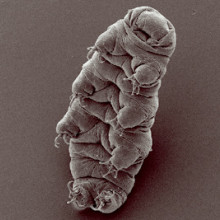
Bugs in space
A handful of common tiny soil-dwelling animals from Earth have successfully gone where previously only bacteria and lichens have been before by surviving a trip into low Earth orbit where they were exposed to the void of space.
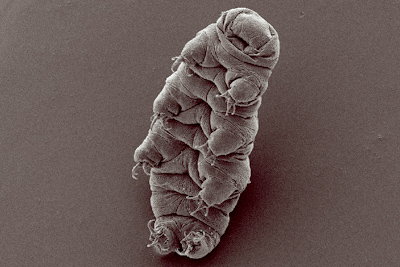 Known as tardigrades these animals are known to be very robust and can survive on Earth under extremely harsh conditions including almost total dessication but their ability to survive a space-walk like this is certainly a surprise. Ingemar Jonsson and her colleagues from Sweden and Germany sent both tardigrades and tardigrade eggs Heavenwards on a European Space Agency Mission last September. The samples were exposed to open space and varying doses of radiation ranging from just UVB and UVB to full solar radiation. Almost all of the animals survived vacuum exposure, two thirds survived the UVA and UVB exposure, and a few clung on even after a sizzling full solar radiation exposure.
Known as tardigrades these animals are known to be very robust and can survive on Earth under extremely harsh conditions including almost total dessication but their ability to survive a space-walk like this is certainly a surprise. Ingemar Jonsson and her colleagues from Sweden and Germany sent both tardigrades and tardigrade eggs Heavenwards on a European Space Agency Mission last September. The samples were exposed to open space and varying doses of radiation ranging from just UVB and UVB to full solar radiation. Almost all of the animals survived vacuum exposure, two thirds survived the UVA and UVB exposure, and a few clung on even after a sizzling full solar radiation exposure.
The researchers, who have published the work in Current Biology, are intrigued as to how these tiny animals are able to resist such fierce conditions. As such they may have previously unrecognised cellular mechanisms that shield them from injury and also enable them to rapidly and efficiently repair DNA damage. Understanding how they achieve this could hold the key to techniques for improved DNA repair in humans and possibly novel anti-cancer therapies.

The convoluted family tree of a Lager
Scientists at Yale university have been studying the family tree of the yeasts which are used to brew Lagers. To do this they have been studying the DNA of the yeasts used to make both modern beers, and that preserved in yeasts up to 130 years old.
 They discovered that there are two major families of yeasts, those which are used to brew "Saaz" beers such as Pilsner and Budweiser, and yeasts used to "Frohberg" beers such as Heineken and Orangeboom. Both families are thought to be the consequence of the Bavarian legal system. In the 15th century it was made illegal to brew beer in the summer, as the the beer was always ruined by the high temperatures, so all the brewing was done in the frigid winters.
They discovered that there are two major families of yeasts, those which are used to brew "Saaz" beers such as Pilsner and Budweiser, and yeasts used to "Frohberg" beers such as Heineken and Orangeboom. Both families are thought to be the consequence of the Bavarian legal system. In the 15th century it was made illegal to brew beer in the summer, as the the beer was always ruined by the high temperatures, so all the brewing was done in the frigid winters.
Conventional brewing yeast, S. cervisiae does not survive well at these temperatures, and yeasts which survive well don't produce much alcohol. Fortuitously though at some point in this period brewing yeast interbred with S. bayanus, which thrives at low temperatures, not once but twice. The Saarz yeast is a conventional hybrid with one set of chromosome from each parent, but the Frohberg yeast is triploid with a second set of Brewer's yeast chromosomes.
They found that neither strain had lost much of the low temperature genome, and both had several copies of the genes vital for fermentation such as those to split up maltose into glucose.
This research is interesting but unfortunately it is very hard to do genetic manipulation on these yeasts as they are both sterile and can only reproduce by making clones of themselves. So it is unlikely that it will have any direct effect on the beer in your local pub, although in the future it may be possibly to make hybrids of other yeasts to make a more interesting pint.
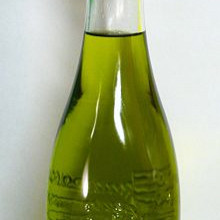
Med diet prevents major disease
Back in July, Greek researchers working as part of EPIC,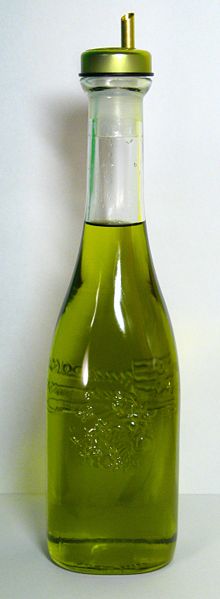 the largest study of diet and cancer ever undertaken, showed that the more Mediterranean a person's diet is, the lower the risk of cancer. That's a diet that contains lots of fruit, veg, grains, nuts and fish, along with a splash of olive oil, but is low in red and processed meat, alcohol, dairy and animal fats.
the largest study of diet and cancer ever undertaken, showed that the more Mediterranean a person's diet is, the lower the risk of cancer. That's a diet that contains lots of fruit, veg, grains, nuts and fish, along with a splash of olive oil, but is low in red and processed meat, alcohol, dairy and animal fats.
Now an analysis of 12 international studies of diet and disease published in the British Medical Journal has shown that a strict Mediterranean diet can help to reduce deaths from other diseases as well as cancer, including heart disease, Parkinson's and Alzheimer's.
Collectively, the studies covered more than 1.5 million people, whose diet and health were tracked from three to 18 years. All the studies used a score, to work out how "Mediterranean" a person's diet was. The researchers found that people sticking strictly to a Mediterranean diet had a 9% drop in overall death rate, including a 9% cut in deaths from heart disease, a 13% drop in the incidence of Parkinson's and Alzheimer's, and a 6% cut in cancer incidence.
The researchers suggest that a tool to help people to "score" their diets might be an effective way to help people cut the risk of these diseases and live longer.
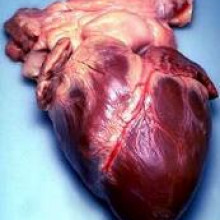
13:02 - Preparing the Heart for Attack
Preparing the Heart for Attack
Daria Mochly-Rosen, Stanford University
Chris - Now there may be a new way to tackle heart disorders and Daria Mochly-Rosen is a research at Stanford in America. She's come up with a new way perhaps to create a condition called cardiac preconditioning. This is where the heart in some way becomes resistant to the effects of stress and reduced oxygen and blood flow, perhaps because you've had that for a while so if you have preconditioning you're resistant to those effects. She's actually found a way of minimising the damage to hearts if you give animals a certain drug. We're now going to find out whether or not this might work in humans. Hello Daria, thank you for joining us.
Daria - Hello, thank you for having me.
Chris - So tell us a bit about this research.
 Daria - It started as you told the audience with a quest to understand how the heart is managing to protect itself from damage if a full-blown heart attack occurs. Quite a few researchers were trying to see if we could put it in a bottle, so to speak. First we took a number of agents which give the heart a preconditioning-like effect and see whether something in common came up. What we found is that this enzyme called aldehyde dehydrogenase is the one that changes more consistently with the amount of damage to the heart after heart attack: or a model of heart attacks. The bigger the damage, the lower the activity of the enzyme. The smaller the damage the higher the activity of the enzyme.
Daria - It started as you told the audience with a quest to understand how the heart is managing to protect itself from damage if a full-blown heart attack occurs. Quite a few researchers were trying to see if we could put it in a bottle, so to speak. First we took a number of agents which give the heart a preconditioning-like effect and see whether something in common came up. What we found is that this enzyme called aldehyde dehydrogenase is the one that changes more consistently with the amount of damage to the heart after heart attack: or a model of heart attacks. The bigger the damage, the lower the activity of the enzyme. The smaller the damage the higher the activity of the enzyme.
Chris - Is your theory then that what's going on in people who have long-standing heart disease, the heart by being stressed makes more of this enzyme so that if someone then has a heart attack they're more protected. If someone has a heart attack out of the blue they have low levels of this enzyme and therefore the heart is more damaged.
Daria - Actually what's interesting is not that the heart is making more of the enzyme but it actually makes it a little bit more active. We were interested to see how it happens and we found the mechanism but then we thought this is all a correlation that increasing the activity of the enzyme is really correlating with decreased damage.
Chris - How does the enzyme work, Daria?
Daria - It is getting rid of what's called free-radicals. These massive things that accumulate in the organ when there is less oxygen in the atriums. In fact, free-radicals are accumulating in a variety of diseases and this enzyme is one of the important enzymes. It gets rid of those very reactive agents that accumulate in the organ during this ischaemic event, heart attack events.
Chris - How are you managing to increase the levels of your enzyme in the experimental system?
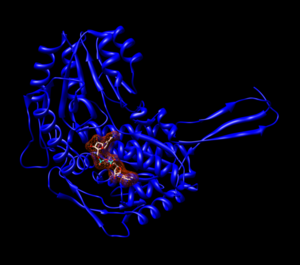 Daria - So what we do is we do not increase the level of the enzyme but we increase its activity. We search for a small molecule that can enhance the activity of the enzyme by screening hundreds of thousands of molecules in a sensitive assay. We found this little molecule being more-or-less the size of aspirin that can increase the activity of the enzyme by about two-fold.
Daria - So what we do is we do not increase the level of the enzyme but we increase its activity. We search for a small molecule that can enhance the activity of the enzyme by screening hundreds of thousands of molecules in a sensitive assay. We found this little molecule being more-or-less the size of aspirin that can increase the activity of the enzyme by about two-fold.
Chris - This is in animals, presumably?
Daria - That's absolutely just right. Nothing has been done in animals other than rats. We like to point out that studies in rats, as encouraging as they are, they are not really telling you unequivocally whether it will work in humans. It's yet to be determined.
Chris - Sure but it's a guide isn't it? You would put this molecule into the animal or the human in future. It would in some way increase the activity of their own aldehyde dehydrogenase enzyme . This would protect the heart in the context of a heart attack. How much damage do you think you could prevent with this strategy?
Daria - In the rats when we know exactly. When we looked first we were inducing it we can reduce the damage by 60%. In human as you know we unfortunately don't know when a patient will have a heart attack and how long the heart attack will be and so on and so forth. It's difficult to determine how much protection you will have. We are particularly encouraged with this finding for uses in scenarios other than just heart attacks. For example, during bypass surgery when there is a period that is determined by the surgeon in which the oxygen and nutrients to the heart are reduced. We also think that it will be able to protect the brain, for example, during this period of low flow of blood through the body.
Chris - Thank you very much, Daria
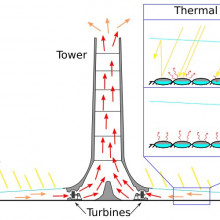
17:21 - The Super Solar Power Tower
The Super Solar Power Tower
Christina Scott, Science and Development Network
Meera - Providing the cities and villages of Africa with a good supply of electricity has long been a challenge for African governments. With many of the smaller countries relying on larger ones to connect them to the grid. But a recent proposal approved by the government in Namibia could provide vast amounts of power from a natural, renewable source. With me this week is Christina Scott from the Science and Development Network to tell me more.
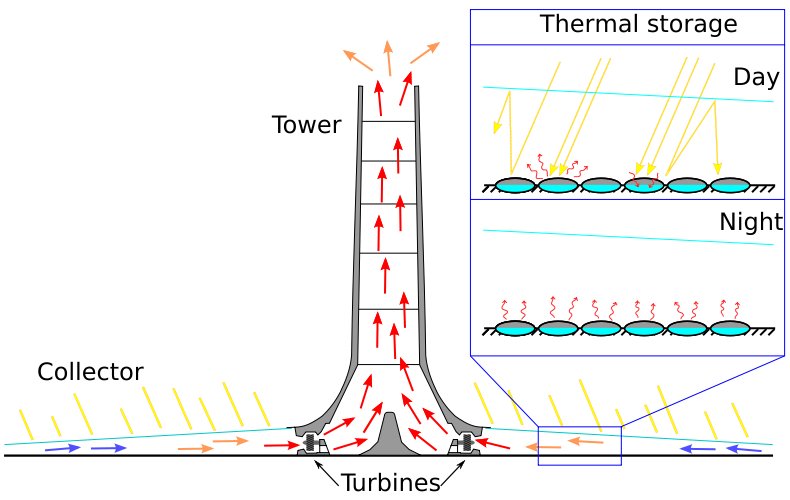 Christina - There's a proposal to build an absolutely massive solar energy tower outside the capital of Namibia which is Windhoek. Historically they've always got their electricity from their neighbours, only South Africa basically ran out of electricity and it's having this terrible knock on effect on all the knock on countries. The good side is that now there's a renewed interest in renewable energy and there's this proposal to build an absolutely massive solar tower, and it's going to be one of the first ones in the world, it's one and an half kilometres high! I have trouble actually imagining how they're going to persuade planes to go around it, it's going to be so big!
Christina - There's a proposal to build an absolutely massive solar energy tower outside the capital of Namibia which is Windhoek. Historically they've always got their electricity from their neighbours, only South Africa basically ran out of electricity and it's having this terrible knock on effect on all the knock on countries. The good side is that now there's a renewed interest in renewable energy and there's this proposal to build an absolutely massive solar tower, and it's going to be one of the first ones in the world, it's one and an half kilometres high! I have trouble actually imagining how they're going to persuade planes to go around it, it's going to be so big!
Meera - That's extremely high, actually, and how wide is it going to be?
Christina - Well basically it's one very boring looking chimney, straight up, straight down. But at the base of it there's going to be a transparent disk stretching for about half a kilometre into the distance around, a bit like a doughnut. The idea is that this will trap the solar energy and it will get funnelled into the tower into wind turbines. At the same time, there's research that's been done here in South Africa at the University of Stellenbosch which says that you can use that transparent disk to actually at the same time create really big greenhouses and do two things at the same time.
What worries me is that there are no prototypes. We had one tower which was a lot smaller in Spain, which was used as a test run, but between then and now there's been almost nothing else. What's happening with this proposal is that they're arguing that because these things work so much better the bigger they are, they want to go past the intermediary steps and build what will basically be the world's biggest man made structure. So it will be incredibly expensive to build, on the other hand it will be very, very inexpensive to run and they're particularly good for areas that don't have a lot of water because some solar power designs require water as a back-up, and quite frankly places like Namibia just don't have the water to be able to cope.
Meera - But at the same time, you've mentioned that it's going to be very expensive to build this tower, so how much money are we looking at here?
Christina - Well, the pre-feasibility report on it's own is $780,000 and there are other countries that are looking at it as well, so presumably the cost will come down if we get quite a lot of solar chimneys being built in countries like Australia, Egypt, India, Morocco. But right now, they're proposing something that's going to be $900 million to construct.
Meera - That's a lot of money, so is it actually worth that amount to go this way?
Christina - I think the Namibian government is interested because they are situated really well for using solar power, and they are extremely vulnerable to what happens in their neighbouring countries. We've got electricity here in South Africa but we're using it all ourselves. They want to become more independent. This is just one of the things that they're looking at, for example Namibia has uranium and rather than exporting it they're now considering nuclear power as well because their economy wont expand without power, it is an issue across the continent.
Meera - Where are we, currently, with this situation? Is it going to be built soon or is it just in discussions? What's the current position?
Christina - Right now they're still in discussions. We interviewed the permanent secretary for the ministry of mines and energy in Namibia and he says that they are basically prepared to work with serious investors. They're interested in this one because the solar tower, the tower of power, can actually work at night, which they're quite interested in.
Meera - It is going to provide 24 hour power then?
Christina - It can provide 24 hour power and it can provide power at peak times, which is something that doesn't always happen with other versions of solar power. They had a study for a similar solar chimney in the Kalahari desert on the South African side of the border, and that was dropped. That was dropped because they considered that it's power was too expensive compared with the coal power that South Africa relies on quite heavily. But given the fact that we've got global warming, it makes a lot of sense for countries that have a lot of sun to wean themselves off oil. I think we're going to find a lot more work going into these solar towers in the future.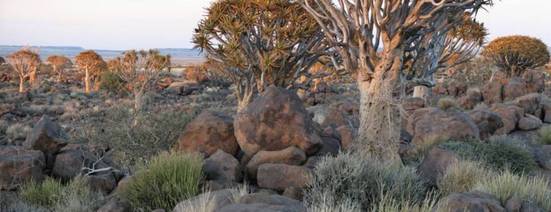
Related Content
- Previous Glow in the Dark Danger
- Next Why do we Stop Noticing Smells?









Comments
Add a comment